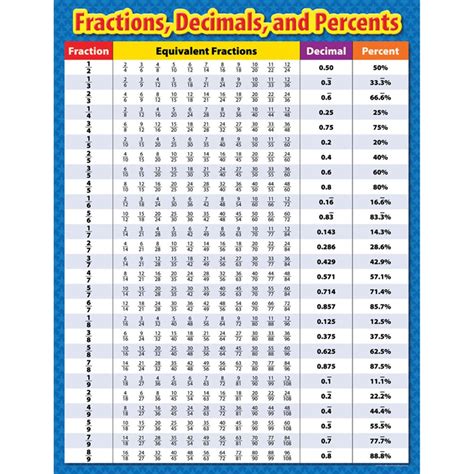10 Is What Percentage Of 30
Kalali
Mar 29, 2025 · 4 min read

Table of Contents
10 is What Percentage of 30? A Comprehensive Guide to Percentage Calculations
Understanding percentages is a fundamental skill applicable across numerous areas of life, from calculating discounts and sales tax to comprehending financial reports and analyzing data. This article delves into the question, "10 is what percentage of 30?", providing a detailed explanation of the calculation, exploring different methods, and showcasing practical applications to solidify your understanding. We'll also cover related concepts and offer tips for mastering percentage calculations.
Understanding the Fundamentals of Percentages
Before we tackle the specific problem, let's review the core concept of percentages. A percentage represents a fraction of 100. The symbol "%" signifies "per hundred" or "out of 100." For instance, 50% means 50 out of 100, which is equivalent to the fraction 50/100 or the decimal 0.5.
Method 1: Using the Formula
The most straightforward method to calculate percentages involves a simple formula:
(Part / Whole) * 100% = Percentage
In our case:
- Part: 10
- Whole: 30
Substituting these values into the formula:
(10 / 30) * 100% = 33.33%
Therefore, 10 is 33.33% of 30.
Method 2: Simplifying the Fraction
Before multiplying by 100%, we can simplify the fraction 10/30. Both the numerator (10) and the denominator (30) are divisible by 10:
10 / 30 = 1 / 3
Now, multiply the simplified fraction by 100%:
(1 / 3) * 100% ≈ 33.33%
This method demonstrates that simplifying fractions can streamline the calculation process and enhance accuracy.
Method 3: Using Proportions
Proportions offer another effective way to solve percentage problems. We can set up a proportion where 'x' represents the unknown percentage:
x / 100 = 10 / 30
To solve for 'x', we cross-multiply:
30x = 1000
x = 1000 / 30
x ≈ 33.33%
This method emphasizes the relationship between ratios and percentages, providing a valuable alternative approach.
Practical Applications: Real-World Examples
Understanding percentage calculations is crucial in many everyday situations. Here are some examples:
-
Discounts: A store offers a 33.33% discount on an item originally priced at $30. The discount amount is calculated as (33.33% * $30) = $10, resulting in a final price of $20.
-
Sales Tax: If the sales tax in your region is 33.33%, and you purchase an item for $30, the sales tax will be (33.33% * $30) = $10, bringing the total cost to $40.
-
Grade Calculations: If you answered 10 out of 30 questions correctly on a test, your score would be 33.33%.
-
Financial Analysis: Percentage changes in stock prices, investment returns, or company profits are frequently analyzed using percentage calculations. A 33.33% increase in profit means the profit has risen by one-third of its original value.
-
Data Interpretation: Percentages are essential for interpreting statistical data and making informed decisions. For example, understanding the percentage of people who prefer a certain product helps businesses understand market trends.
Beyond the Basics: Advanced Percentage Calculations
While this article focuses on the fundamental aspects of percentage calculation, let's briefly touch upon more advanced concepts:
-
Percentage Increase/Decrease: Calculating the percentage change between two values involves determining the difference, dividing it by the original value, and multiplying by 100%. For instance, if a value increases from 20 to 30, the percentage increase is ((30-20)/20) * 100% = 50%.
-
Percentage Point Difference: This refers to the arithmetic difference between two percentages. If the unemployment rate drops from 10% to 5%, the decrease is 5 percentage points, not 50%.
-
Compounding Percentages: This is relevant when dealing with situations where percentages are applied repeatedly, such as with compound interest.
Mastering Percentage Calculations: Tips and Tricks
To improve your proficiency in percentage calculations, consider these tips:
-
Practice Regularly: Consistent practice is key to mastering any mathematical skill. Solve various percentage problems to build your understanding and speed.
-
Use Online Calculators: Online percentage calculators can be valuable tools for checking your work and gaining a better understanding of the concepts.
-
Understand the Concepts: Don't just memorize formulas; grasp the underlying principles to apply them effectively in diverse scenarios.
-
Break Down Complex Problems: If faced with a complex percentage problem, break it down into smaller, manageable steps.
-
Check Your Work: Always double-check your calculations to avoid errors.
Conclusion: The Power of Percentages
The ability to calculate percentages efficiently is a valuable asset in many areas of life. Understanding how to determine what percentage one number represents of another, as illustrated with the example of "10 is what percentage of 30?", empowers you to interpret data, make informed decisions, and succeed in various academic, professional, and personal endeavors. By mastering the concepts and methods outlined in this comprehensive guide, you will build a strong foundation in percentage calculations and unlock their practical applications in countless situations. Remember to practice regularly and utilize the various methods to solidify your understanding. The more comfortable you become with these calculations, the easier it will be to navigate the world of numbers and percentages with confidence.
Latest Posts
Latest Posts
-
Is Toasting A Marshmallow A Chemical Change
Apr 01, 2025
-
What Is The Electron Configuration For Te
Apr 01, 2025
-
What Is 9 16 In Decimal Form
Apr 01, 2025
-
How Many Inches Is 220 Centimeters
Apr 01, 2025
-
How Many Cups In 6 Fluid Ounces
Apr 01, 2025
Related Post
Thank you for visiting our website which covers about 10 Is What Percentage Of 30 . We hope the information provided has been useful to you. Feel free to contact us if you have any questions or need further assistance. See you next time and don't miss to bookmark.
